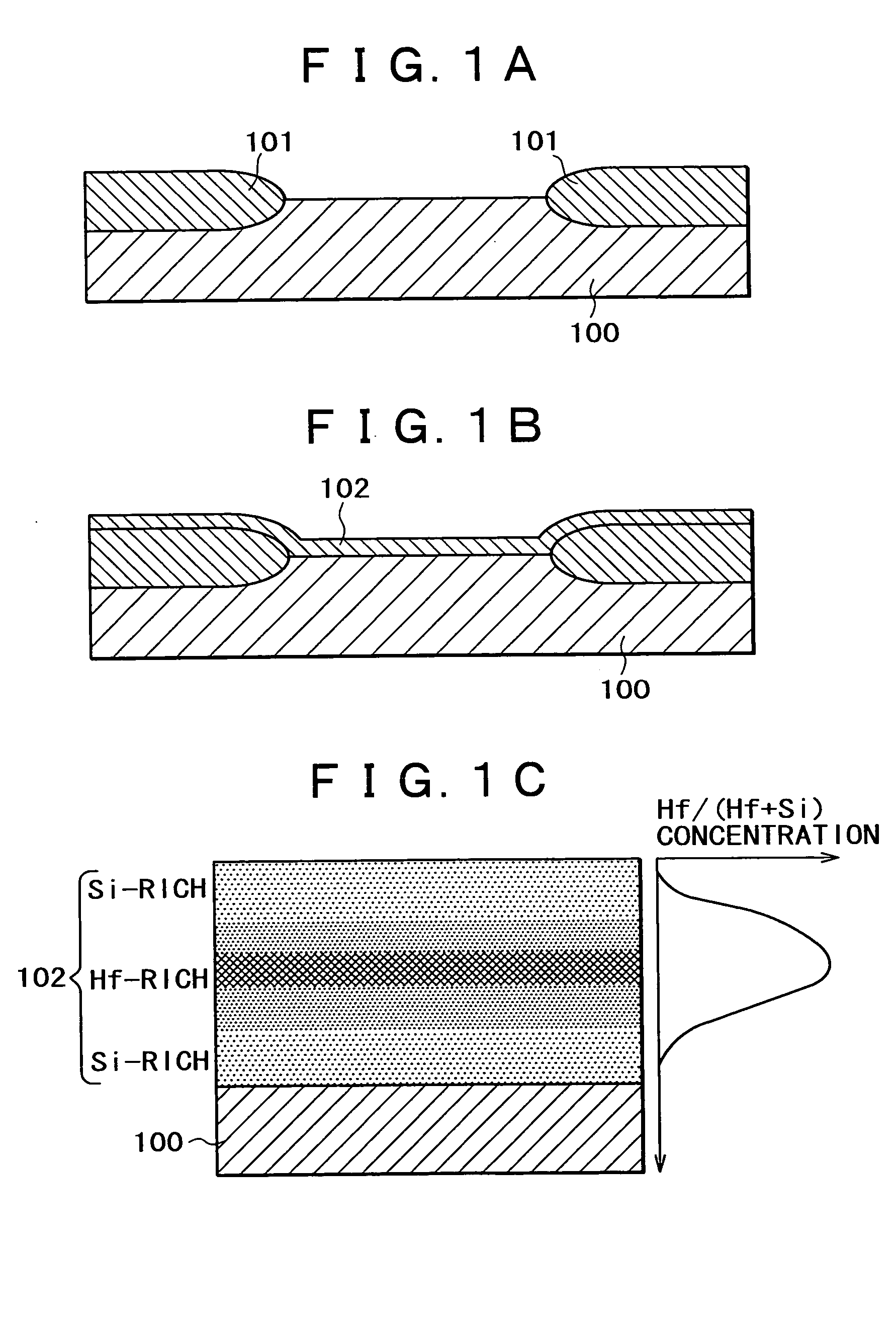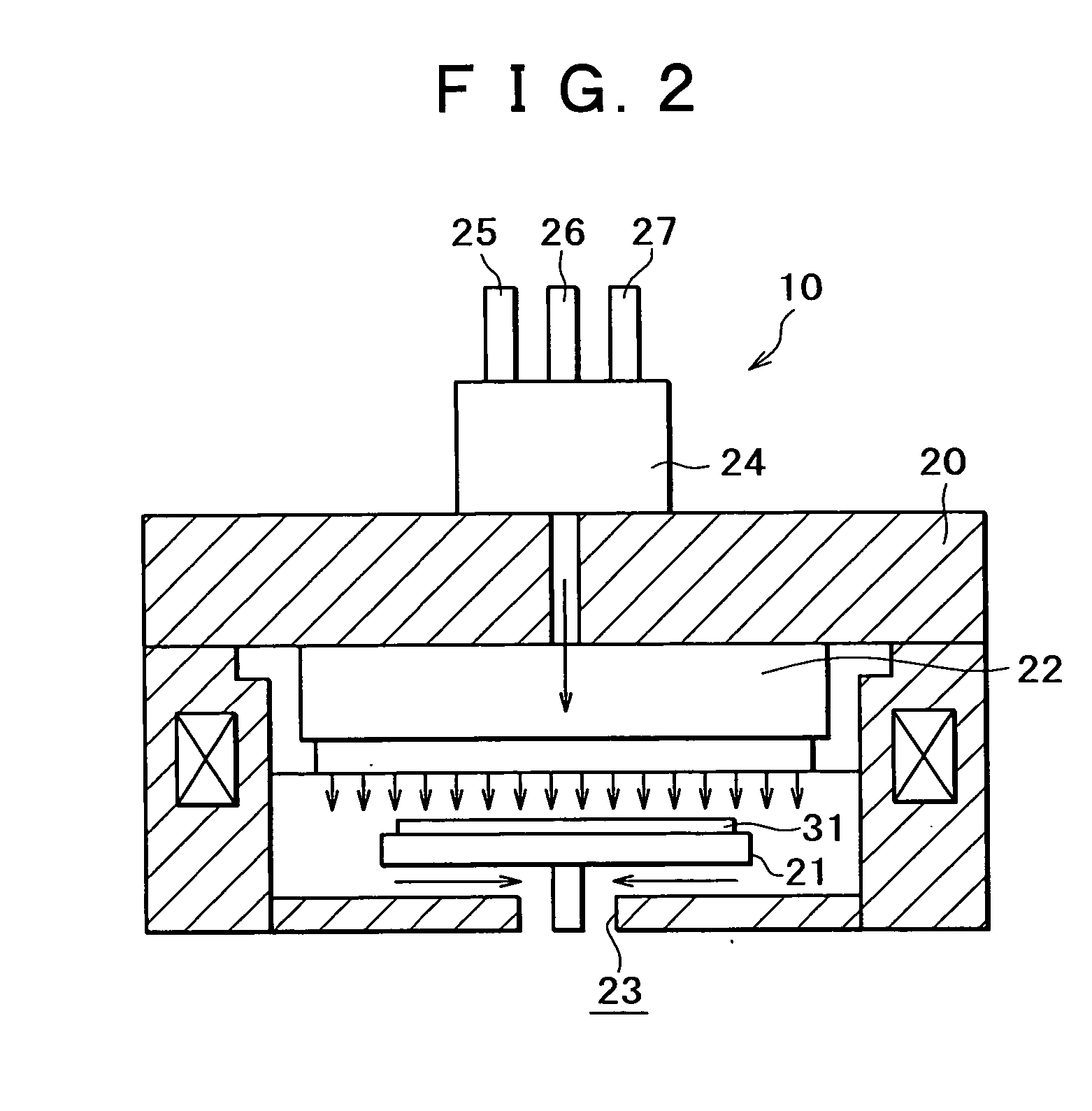Method of producing insulator thin film, insulator thin film, method of manufacturing semiconductor device, and semiconductor device
a technology of insulator and thin film, which is applied in the direction of solid-state devices, coatings, chemical vapor deposition coatings, etc., can solve the problems of increasing the leak current between the gate and the substrate, the limit of thinning the gate oxide film, and the low heat resistance of the gate, so as to and reduce the concentration of metal atoms
- Summary
- Abstract
- Description
- Claims
- Application Information
AI Technical Summary
Benefits of technology
Problems solved by technology
Method used
Image
Examples
embodiment 1
[0024] As shown in FIG. 2, a thin film forming system 10 includes a chamber 20. The chamber 20 is equipped with an external heater (not shown), and the chamber 20 is heated by the heater. A stage (susceptor) 21 for mounting thereon a substrate 3 on which to form an insulator thin film is provided in the inside of the chamber 20. A shower head 22 for supplying raw material gases is provided at a position opposite to the substrate mount surface of the stage 21. An exhaust port 23 for discharging the raw material gases in the chamber 20 is provided at a bottom portion of the chamber 20, and the exhaust port 23 is connected to an evacuation system (not shown). The shower head 22 is provided with a gas inlet port 23 and a gas selector valve 24, in this order from the interior side of the chamber 20. Supply pipes 25, 26, 27 for supplying, for example, a first raw material gas, a second raw material gas and a purging inert gas are connected to the gas selector valve 24. While the number of...
embodiment 2
[0040] Next, one embodiment of the method of manufacturing a semiconductor device and the semiconductor device according to the present invention will be described referring to the manufacturing process diagrams in FIGS. 5A to 5C. FIGS. 5A to 5C illustrate one example of a semiconductor device in which the insulator thin film formed by the method of producing an insulator thin film in Embodiment 1 described above referring to FIGS. 1A to 1C is used as a gate insulation film, i.e., an insulated gate type field effect transistor.
[0041] As shown in FIG. 5A, an insulator thin film 102 is formed on a substrate (silicon substrate) 100 according to Embodiment 1 above. Next, a gate electrode material film 103 is formed on the insulator thin film 102. Polycrystalline silicon (polysilicon), for example, can be used for the gate electrode material film, and the chemical vapor deposition process can be used as one example of the film forming method. The film thickness was, for example, 180 nm....
PUM
| Property | Measurement | Unit |
|---|---|---|
| Concentration | aaaaa | aaaaa |
Abstract
Description
Claims
Application Information
 Login to View More
Login to View More - R&D
- Intellectual Property
- Life Sciences
- Materials
- Tech Scout
- Unparalleled Data Quality
- Higher Quality Content
- 60% Fewer Hallucinations
Browse by: Latest US Patents, China's latest patents, Technical Efficacy Thesaurus, Application Domain, Technology Topic, Popular Technical Reports.
© 2025 PatSnap. All rights reserved.Legal|Privacy policy|Modern Slavery Act Transparency Statement|Sitemap|About US| Contact US: help@patsnap.com



